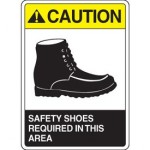How SAFE is Your "Construction Project" From The New Regulations by the OHSA?
 Training is so very important but it can also be costly if not done correctly. It can cost a life, it can cost a limb and of course it can cost you in ways that you wouldn’t even think of. Your workers want to return home injury free and the prescription for that is for them to wear hard hats and safety gear at all times while on the job. As for you, the project owner, you better get acquainted with the new rules as well as educating yourself on the language that can be used against you found in the Ontario’s Occupational Health and Safety Act.
Training is so very important but it can also be costly if not done correctly. It can cost a life, it can cost a limb and of course it can cost you in ways that you wouldn’t even think of. Your workers want to return home injury free and the prescription for that is for them to wear hard hats and safety gear at all times while on the job. As for you, the project owner, you better get acquainted with the new rules as well as educating yourself on the language that can be used against you found in the Ontario’s Occupational Health and Safety Act.
Ontario is introducing new training to help protect workers and keep them safe on the job beginning July 1, 2014. There is an important word they use in all their legal jargon to explain who shall get charged if an incident occurs. The operative word is “constructor”. No not “instructor” but “constructor”. Hire a contractor and you may just have inadvertently put yourself in the position to face a liability as a “constructor” under the Act for violations and accidents involving subcontractors and their employees. “Constructors” can face fines up to $500,000 per offence and individuals can face fines up to $25,000 plus one year in jail!
Did you know you can become a “constructor” not only by directly employing a worker but also by hiring a subcontractor or independent contractor. A “constructor” undertakes the construction project for an owner but it may also include an owner who undertakes “all or part” of the project himself. Constructors are responsible for ensuring overall safety on the project. A project owner can assume the responsibility inadvertently and be charged for not following the obligations imposed on constructors. So if an accident occurs, yes you got it, the project owner has no legal defense because of being part of “all or part of” the project.
How can this happen, here are some common examples:
- Hire more than one contractor directly to work on the site at times that coincide
- Assign their own employees to work alongside the contractor’s workers
- Personally supervise aspects of the work and direct workers
- Personally respond to safety issues and related incidents
How to avoid “Constructor Liability”
- Project owners should engage the services of an arms-length general contractor for any project and have them select, hire, dire and pay the contractors
- Project owners should require the constructor to file a “notice of project” if necessary, and to obtain all necessary permits, drawings, inspections and approvals
- Payment of invoices may be viewed as contextual evidence that the project owner exercised direct control over the subcontractors by paying them directly. Project owners should avoid paying subcontractors directly whenever possible
- Never hire another service/subcontractor while a contractor is currently in charge of a project because you may inadvertently become the “constructor” for the entire project, let the original contractor hire the service/subcontractor or wait to the project is finished and then move ahead with the next project with a new contractor
- Project owners should communicate any safety concerns to the constructor and leave it to them to address the issue. If they fail to do this, the project owner should consider shutting down the project until the constructor can provide an approved safety plan
So bottom line, educate yourself of the Act and invest into training your staff or hire a reputable Contractor…..Also, get yourself a nifty hardhat and some swanky safety shoes because now we are all in the same boat and you won’t look out of place!



